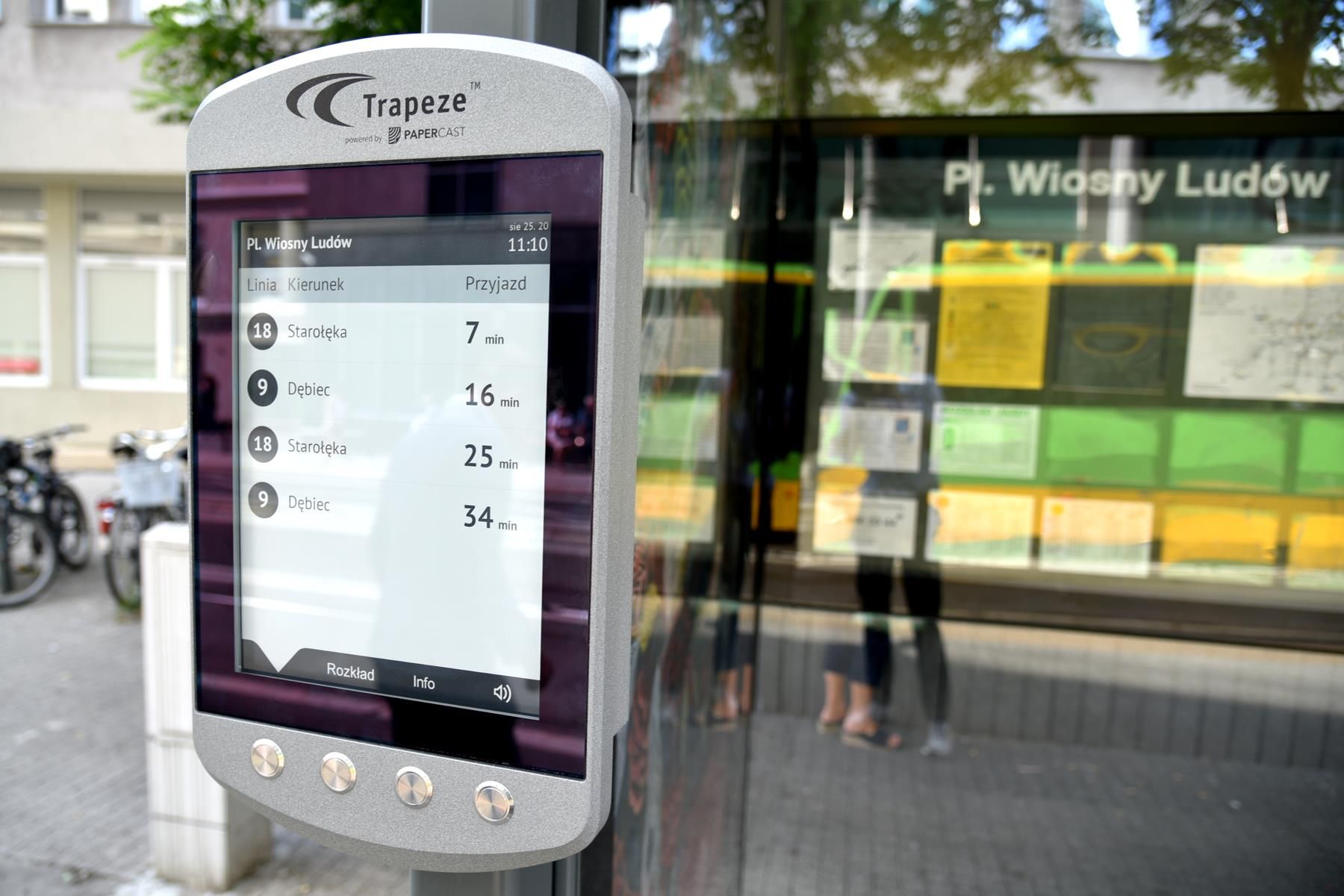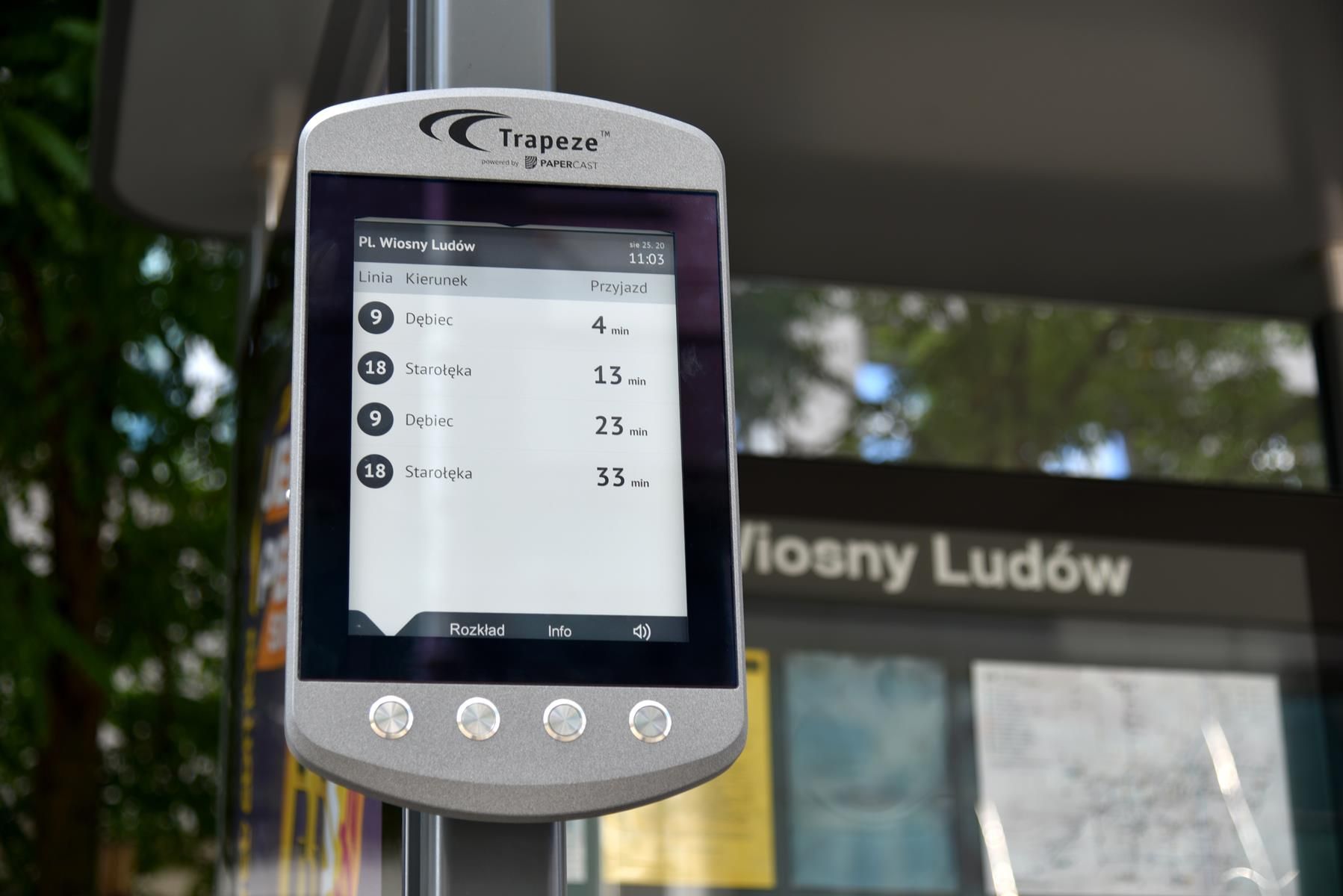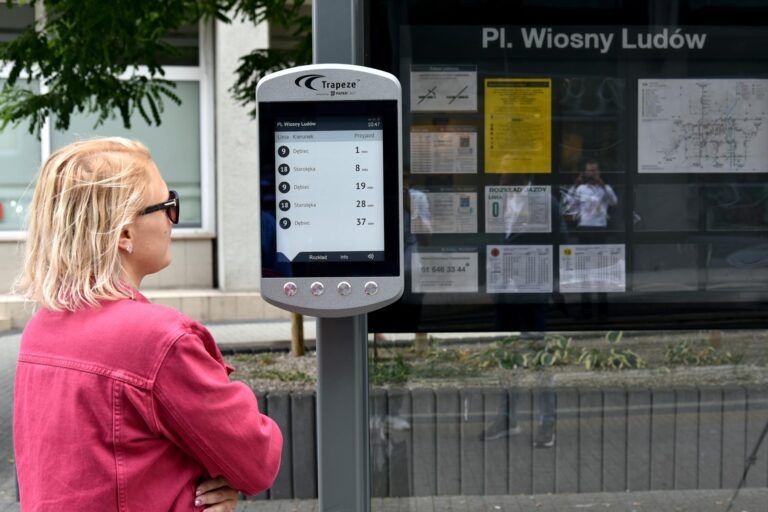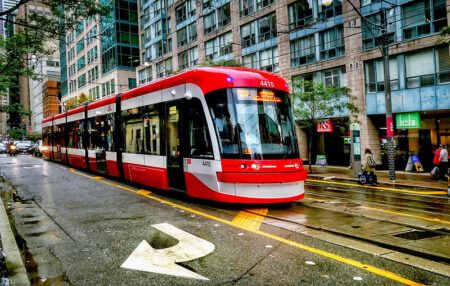For the next three months, people using public transport services in Poznan, Poland, will have the opportunity to test new Papercast electronic paper in use at bus stops. The trial will assess the passenger reaction and compare functionality with regular LED Displays, and if successful it is expected that e-paper will be rolled-out across the city’s transit network.
The 13.3-in Papercast e-paper display features four function buttons, allowing users to toggle through detailed and clearly presented travel information. This includes real-time arrival predictions (using the GTFS protocol), timetables and route maps, as well as text-to-speech audio announcements.
As a Papercast partner, Trapeze Poland supplied the e-paper display to Wielkopolskie Centrum Wspierania Inwestycji (WCWI), a local government unit responsible for finding innovative smart city solutions that contribute to the development of Poznan.

“Technologies supporting public transport are developing extremely fast,” says Mikołaj Kwiatkowski of Trapeze Poland. “It important that we keep up with innovative solutions that meet the public’s expectation for well-presented, live travel information. E-paper displays provide an extremely user and environmentally friendly way of meeting demand and getting this information to passengers”.
“Not only do these e-paper displays save on energy costs, but also removes the significant expense of changing paper timetables,” says Rafał Ratajczak, smart city manager at WCWI. “When there is a timetable change, we can easily update remotely. If there is a delay or disruption, we can notify passengers instantly. Not only does this lead to cost savings, but it is much better for the people using the services.”

While the use of e-paper in bus stop displays is still considered new, Papercast was officially launched to the market in 2017 following extensive field trials. It has since experienced rapid adoption worldwide, including the UK, Germany, USA, Abu Dhabi and Singapore. Papercast is the most advanced technology of its kind, with the largest number of displays in operation globally.
The main advantage of e-paper is that it is sunlight readable with incredibly low power consumption, which means it can be solar powered. Connected wirelessly to the content management system, the Papercast displays can be viewed and updated remotely. E-paper is being used to replace paper timetables and to keep passengers informed with accurate arrival predictions at the bus stop. The standalone nature of Papercast displays means they can be fully operational within a few hours, compared to LED displays which require a power source.





